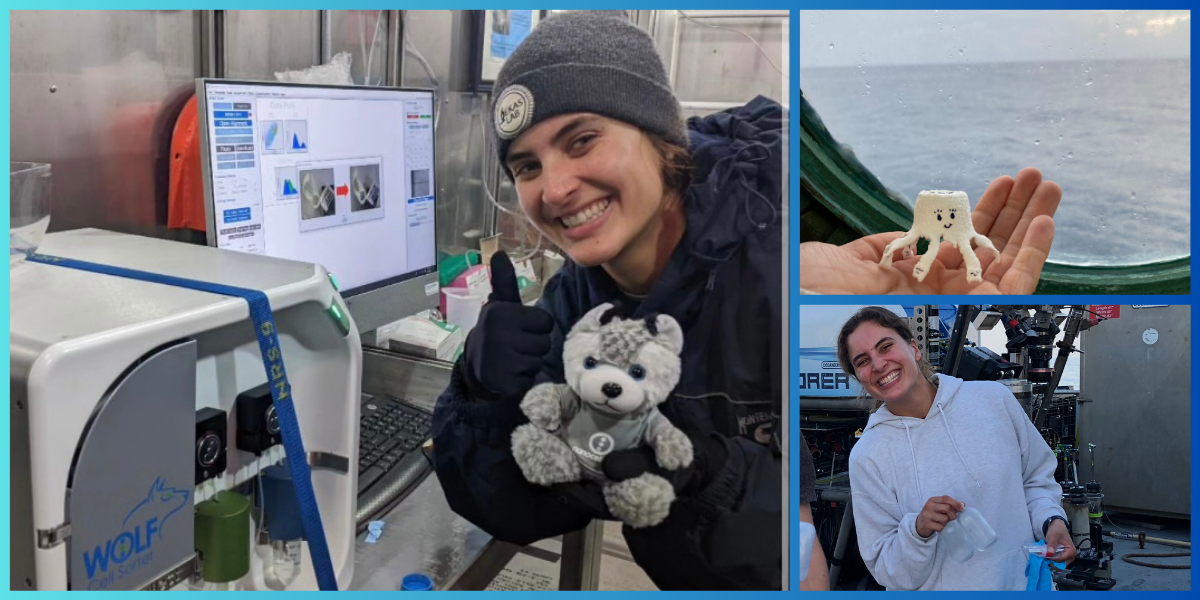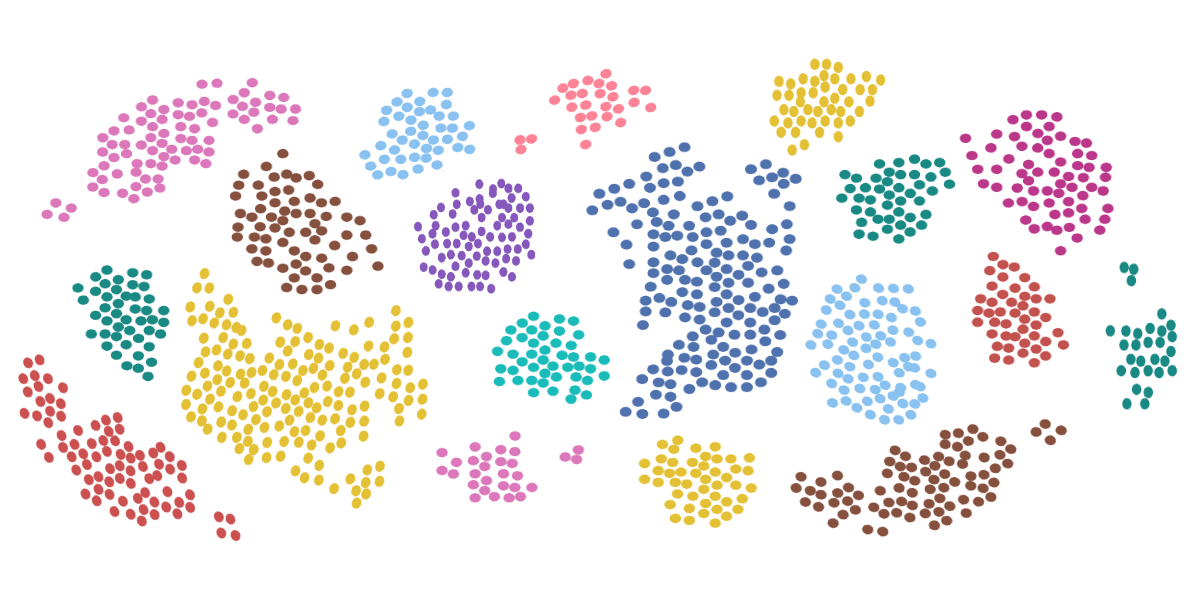ATAC Sequencing Analysis: A Helpful Guide

You’ve probably heard of the newest branch of single cell genomics research: epigenetics. This hot craze in the biological community, while coined in 1942, wasn’t fully fleshed out as a concept until recently.
In an overview of the research done up to 2011, James Hamilton of John Hopkins School of Medicine, defined epigenetics and outlined its prominent potentialities in various fields:
“Epigenetics is defined as heritable changes in gene expression that are, unlike mutations, not attributable to alterations in the sequence of DNA… Epigenetic regulation of gene expression appears to have long-term effects and wide-ranging effects on health. Diet and environmental exposures may potentially alter the level and scope of epigenetic regulation, thus interesting developments in the study of epigenetics might explain correlations that researchers have found between lifestyle and risk of disease.”
In essence, these DNA modifications are changes to chromatin that can be reversed, reversed back, and reversed once more—altering the phenotype each time. How quickly these changes occur (generationally, subsequently throughout one’s lifetime, etc.), and what is possible to change are both fuming with new research—particularly as it relates to diet and healthy lifestyle.
How are these modifications being studied?
You guessed it, assay of transposase accessible chromatin sequencing, or in short, ATAC sequencing analysis.
Read on for more information on ATAC sequencing and how specific technologies are used, including a flow cytometer.
Chromosomes, Chromatin, and Nucleosomes | Some Building Blocks
There’s a link here between epigenetics and ATAC sequencing: chromatin. To gain the full picture of the chromatin region and its importance, let’s build up the pyramid-like hierarchy of DNA building blocks:
- Nucleosomes – Starting at the bottom, nucleosomes are DNA strands that are wrapped around 8 histone proteins. These are then further wrapped tighter by additional proteins to create the chromatin structure.
- Chromatin – The nucleosomes combine with other proteins to make up the chromatin fibers. There are two forms of chromatin: euchromatin (which is transcribed) and heterochromatin, which is inactive (not transcribed). Along with additional proteins, the chromatin forms the structure of chromosomes.
- Chromosomes – The human genome is encoded into the 23 chromosome pairs, located within every cell. These chromosomes hold all the information about the organism. In the case of humans, that includes how tall we can be, the color of our hair, all the way down to the shape of our pelvic bones. That’s about 3 billion base pairs packaged up into nucleosomes, which are tightly bound into chromatin, which are further bound into strange shapes—chromosomes.
While studying each of these factors is critical to understanding the whole picture of the human genome, chromatins play a particularly important role. And this is where ATAC sequencing comes into the picture.
Assay of Transposase Accessible Chromatin Sequencing
To understand the full weight of what ATAC sequencing is, it might be easier to break it down into components.
- A – Assay – Assays, like cell assays, are investigative protocols to analyze cell characteristics for everything from molecular biology to pharmacology. This could include:
-
- The population size of specific cell types
- The presence of certain proteins or cell phenotypes
- The function of different cellular and subcellular proteins
- T – Transposase – This enzyme lives within the nucleus and has the remarkable ability to “cut and paste” genes from one DNA fragment to another. It essentially rearranges the underlying genetic code. This is a natural function in any individual cell that is used to eliminate fatal mutations or create novel mutations. This process is called transposition, and it has been suggested to have caused up to 40% of all genetic mutations from human’s early predecessors.
- A – Accessible –DNA is only accessible in certain areas of the open chromatin strand. This limits how much transposition can occur and in what regulatory regions. However, this single cell chromatin accessibility can change, depending on the environment and external stimuli.
- C – Chromatin – Detailed above.
- Seq – Sequencing – The process by which DNA, RNA, and peptide chains are categorized and “read” is called sequencing. RNA sequencing analysis uses semiconductor technology to turn genetic information (A, T, G, C) into streams of computational information (1, 0).
Putting this together then: Assay transposase accessible chromatin sequencing is the method of mapping or “reading” chromatin accessibility across a given genome.
A Further Guide to ATAC Sequencing
First outlined as a possibility in 2013, ATAC seq has quickly come into the molecular biology spotlight. Many publications cite it as the underlying technique needed to unlock further research. As mentioned in a paper on ATAC-seq data, Feng Yan writes:
“An exponential increase of curated ATAC-seq datasets and publications indicates its value in a wide spectrum of biological questions, such as depicting enhancer landscapes in healthy mammalian tissue and cell types, studying accessibility changes between normal hematopoiesis and leukemia, as well as the chromatin state within schizophrenia patients and The Cancer Genome Atlas (TCGA) pan-cancer cohort.”
It is gaining popularity in many biological areas like immunology and oncology. Even those studying aging are utilizing this fundamental single cell sequencing.
ATAC Sequencing and its Utilization in Cancer Research
Tissue development and maintenance via gene expression are controlled by epigenetic mechanisms. And researchers suspect that the disruption of normal epigenetic processes is what results in cancerous cells. In fact, a non-functioning cell is a rough explanation of what a cancer cell is. For example, when there’s a large portion of a liver made up of cancerous liver cells, the problem is that there is now a large section of the liver that isn’t functioning properly. Unless prevented from continued proliferation, the cancer cells will eventually spread and render the liver useless.
Where do chromatins and epigenetics come into play?
In an analysis done by Shikhar Sharma, Theresa Kelly, and Peter Jones, called Epigenetics in Cancer, they write:
“The genetic origin of cancer is widely accepted; however, recent studies suggest that epigenetic alterations may be the key initiating events in some forms of cancer. These findings have led to a global initiative to understand the role of epigenetics in the initiation and propagation of cancer.”
The study of epigenetics within oncology largely relies on the findings from ATAC-seq analysis. Researchers can sequence the accessible chromatin of specific cancerous cells to determine whether epigenetic abnormalities play a role in the disease. Sharma and the team go on further to say promising things for the future of epigenetics and cancer:
“The reversible nature of the profound epigenetic changes that occur in cancer has led to the possibility of ‘epigenetic therapy’ as a treatment option. The aim of epigenetic therapy is to reverse the causal epigenetic aberrations that occur in cancer, leading to the restoration of a ‘normal epigenome’.”
ATAC Sequencing and the Unveiling of the Aging Process
One area of investigation that’s under increasing pursuit by biologists is the study of aging. Epigenetics seems to be the key to unlocking the mysteries of why plants, animals, and people age.
As cells experience more epigenetic changes, cell division is affected (which may be linked to the process of aging).
As summarized in an analysis of Epigenetics and Aging, by Sangita Pal and Jessica Tyler:
“…young healthy cells maintain an epigenetic state that promotes the formation of a compact chromatin structure and precise regulation of all the basic biological processes. However, aging cells experience alterations in all aspects of the chromatin landscape, DNA accessibility, and ncRNA production, until a threshold of altered gene expression and the compromised genomic region is crossed, and the cells finally succumb to a permanent halt in progression through the cell cycle. The reversible nature of epigenetic mechanisms makes it possible to restore or reverse some of these phenotypes to attain more youthful cells.”
While “slowing” the process of aging seems possible in the near future; there are still big questions around the process of halting it, and then reversing it.
Combining ATAC Sequencing Analysis with Multi-Omics Approach
Another quickly growing analytic strategy is evaluating the “multi-omics” of cells. This approach combines traditional investigative technologies to allow researchers to study multiple biological areas at once. This includes a cell’s:
- Genome
- Epigenome
- Transcriptome
- Proteome
- Metabolome
- Microbiome
ATAC-seq is a powerful method that helps break down the properties of the chromatin region, one key player in the epigenome field. Combining this with the other technologies to enable multivariate and relational analysis will ensure many novel discoveries to come.
Further Benefits of Improved ATAC Sequencing
The way that any field of research develops is a mixture of three primary components: brute force scientific method, novel discoveries, and transplanting research from one field to another. No field operates in isolation, and as such, epigenetics—one deepening field thanks to ATAC seq data—acts like an ever-enlarging umbrella, encompassing medicine, biology, evolutionary theory, dietary theory, neurology, and more.
Just imagine: Alzheimer’s, diabetes, certain types of cancers, aging—what if these are signals of an epigenetic morph gone wrong? Does that mean there are ways to reverse the genetic expression and reverse the disease?
The world of epigenetics and ATAC sequencing is only going to expand our understanding of the human body. To get labs from theory to published paper faster, there’s NanoCellect. Happy cells make for efficient research—and NanoCellect knows happy cells.
Sources:
- NCBI. Epigenetics: Principles and Practice. https://www.ncbi.nlm.nih.gov/pmc/articles/PMC3134032/
- Scitable. Chromatin. https://www.nature.com/scitable/definition/chromatin-182
- Scitable. DNA Packaging: Nucleosomes and Chromatin. https://www.nature.com/scitable/topicpage/dna-packaging-nucleosomes-and-chromatin-310
- PDB-101. Transposase. http://pdb101.rcsb.org/motm/84
- BMC. From reads to insight: a hitchhiker’s guide to ATAC-seq data analysis. https://genomebiology.biomedcentral.com/articles/10.1186/s13059-020-1929-3
- NCBI. Epigenetics in cancer. https://www.ncbi.nlm.nih.gov/pmc/articles/PMC2802667/
- NCBI. Epigenetics and aging. https://www.ncbi.nlm.nih.gov/pmc/articles/PMC4966880/



